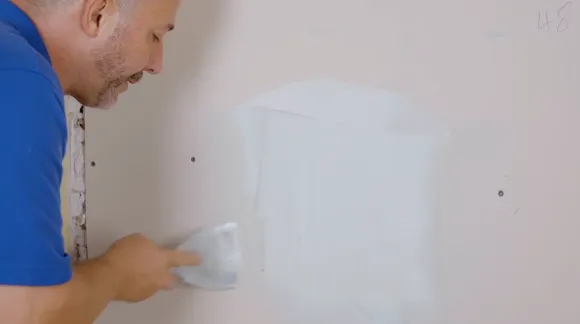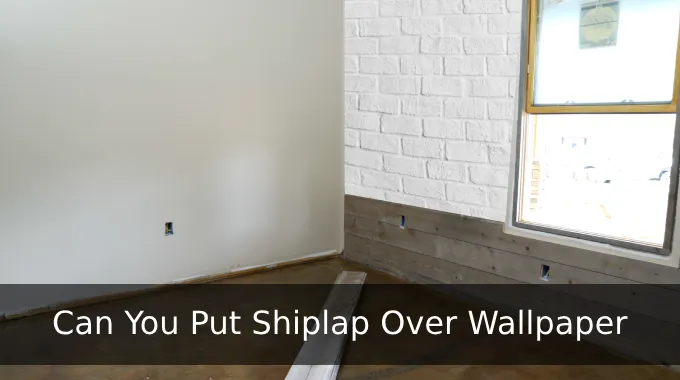Last Updated on March 13, 2023
With the demand for interior finishing and decoration on the rise, drywall mud is fast becoming a go-to material. But, if not handled properly, you could risk severe health complications, from breathing problems to cancer due to hazardous mud dust particles created during installation or sanding.
Drywall mud is a complex concoction with potentially hazardous ingredients, including carcinogens like formaldehyde and acetaldehyde, as well as crystalline silica, which can be especially harmful if inhaled. Children are particularly vulnerable to these risks, so you should take extra precautions when using drywall mud around them.
This post will discuss the common toxic ingredients found in drywall mud. We’ll cover everything from hidden toxins lurking inside a batch of mud to how much danger they might cause if ingested.
Is Drywall Mud Toxic to Breathe?
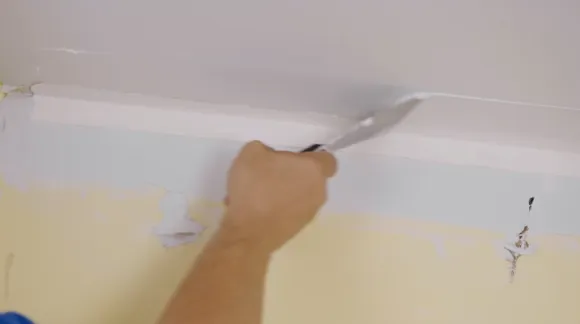
Contains silica and other irritating particles, drywall mud dust can be toxic to breathe. Exposure to these particles can cause persistent throat and coughing, airway irritation, phlegm production, and difficulty breathing, similar to those experienced by asthma sufferers.
Furthermore, breathing in airborne drywall mud dust over an extended period could lead to more severe respiratory problems such as pulmonary fibrosis or lung cancer.
Some drywall muds are made from gypsum, a natural product containing calcium sulfate dihydrate that can irritate the eyes and mucous membranes if inhaled in large quantities.
Is Drywall Mud Dust Toxic to Kids?
When someone sands drywall joint compound or mud, the dust gets released into the air, which can harm kids’ respiratory systems. Aside from this, some forms of joint drywall powder mud compound may contain asbestos fiber which can also be harmful when inhaled by kids.
Inhaling too much dust from drywall mud can irritate children’s mucous membranes in respiratory passages. This irritation can affect breathing and cause coughing and sneezing fits. Small children have a greater risk of this exposure as they often explore their environment by putting things in their mouths.

The drywall mud dust particles are so small that a child may even unwittingly ingest some of them without noticing any ill effects immediately. If enough is consumed, the child may experience abdominal pain or nausea.
Also, some chemicals in the drywall mud that make it hazardous to children’s health are formaldehyde and methylene chloride.
These chemicals are usually found in much lower concentrations than necessary to affect children’s health adversely. But long-term exposure to these substances has been linked to reproductive issues and an increased risk of cancer.
Parents looking for an extra layer of safety around their kids should consider proper ventilation during sanding or cutting activities. It can help keep dust particles from becoming airborne and ensure that children nearby don’t end up breathing them in.
What are the Common Toxic Ingredients Present in Drywall Mud?
While drywall mud is an incredibly useful building material, its production often involves toxic ingredients that can have profound health implications for anyone who may come into contact with it. The most common toxic ingredients in drywall mud are:
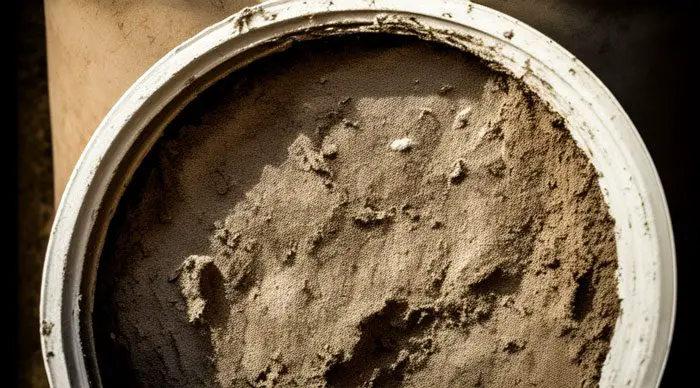
Formaldehyde is a volatile organic compound (VOC) commonly used as an adhesive to produce drywall mud. It is also often used to treat finished products to make them more durable.
Unfortunately, formaldehyde has been linked to various respiratory conditions, such as asthma and cancer, when inhaled in high concentrations.
Acetaldehyde is another VOC that is commonly found in drywall mud. This substance has been known to irritate the skin and eyes upon contact and can be hazardous if inhaled for long periods. It can also break down into other harmful compounds, such as acetic acid, further irritating the eyes and skin.
Ethylene-vinyl acetate polymer is a synthetic resin typically used as a plasticizer in drywall mud. This material can release toxins such as phthalates into the air when heated or burned, leading to organ damage over time if exposed to high concentrations regularly.
Attapulgite is a naturally occurring clay mineral that is sometimes added to drywall mud as an absorbent agent due to its ability to absorb moisture from the air or other liquids around it.
Though not typically considered dangerous, this clay mineral has been linked to lung issues when its minute particles become airborne due to regular wear and tear.
What Happens If You Ingest Toxic Drywall Dust?

Accidentally ingesting toxic drywall dust can have several serious health effects, ranging from mild irritation to more serious respiratory illnesses. The most common symptoms of ingesting toxic drywall dust include coughing, eye irritation, sneezing, runny nose, and nosebleeds.
Inhalation of drywall dust particles can also cause more serious long-term health issues such as asthma and cancer. Dust exposure may cause psychological problems such as depression, anxiety, and irritability.
When inhaled or ingested, the tiny particles in toxic drywall dust can get stuck in the airways and lungs, causing inflammation and difficulty breathing. These particles are also easily absorbed into the bloodstream, where they can damage organs such as kidneys or the liver due to their toxicity.
Drywall dust contains substances that may cause allergic reactions such as skin rash and eczema. Long-term inhalation of the dust may lead to kidney stones or pulmonary fibrosis. Also, exposure to high levels of toxic drywall dust has been linked with an increased risk of cancer, including lung cancer, mesothelioma, and lymphomas.
Furthermore, it is believed that prolonged exposure to these particles can also increase the risk for certain types of cardiovascular diseases like hypertension as well as chronic obstructive pulmonary disease (COPD).
How Do You Know If Drywall Mud is Toxic?
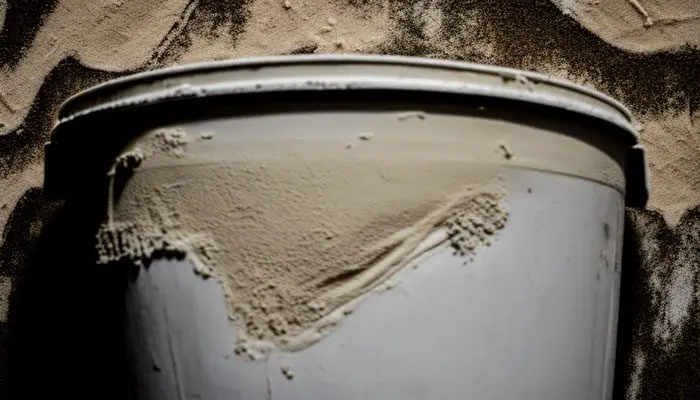
To determine if drywall mud is toxic, you’ll need to check the ingredients list on the product packaging. Certain chemicals such as asbestos, formaldehyde, gypsum, silica, and zinc sulfide could indicate that it is a hazardous material.
If you’re tackling a project requiring drywall mud, double-check the label to ensure it won’t harm your health. A funky smell could indicate potentially hazardous materials, so keep an eye out and work safely.
How to Safely Handle Drywall Toxic Mud with Precautions?
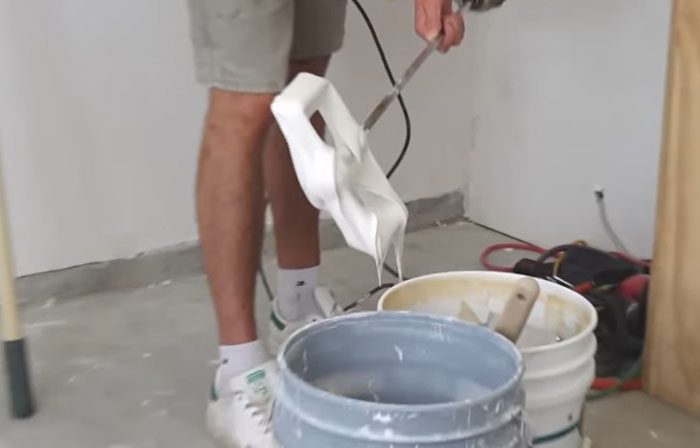
When handling drywall toxic mud, safety precautions should always be taken. Wearing protective gear such as a respiratory mask can help reduce exposure to dust particles and other toxins in the air while using the product.
Also, ensuring adequate ventilation while working with drywall mud is important since toxic fumes can build up quickly in close quarters. Lastly, any tools or equipment used to handle the mud should be cleaned appropriately afterward to prevent potential contamination or inhalation of dust particles.
How Long Does Drywall Toxic Dust Stay in the Air?
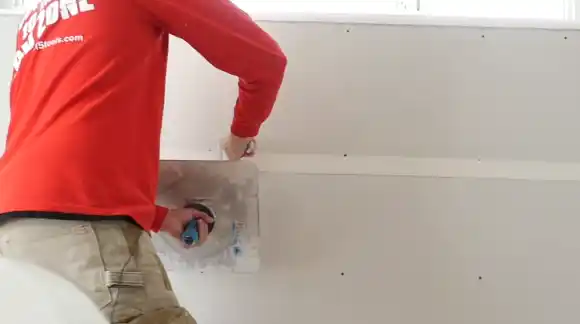
The amount of time that drywall toxic dust stays in the air will depend on variables such as ventilation rates and the size of airborne particles.
Generally speaking, most fine dust particles will remain suspended in the air for around 10-15 minutes before settling down on surfaces or being filtered out by air purifying systems like HVAC units or air scrubbers.
Over time, these particles may accumulate indoors and become more difficult to remove without proper cleaning techniques such as regular vacuuming and wiping down surfaces with damp cloths or sprays.
Can Drywall Mud Dust Make Your Stomach Hurt?
Yes, drywall mud dust can cause stomach upset due to its composition, which includes silica and other potentially hazardous components that can irritate mucus membranes when inhaled over long periods without proper protection.
Ingesting even small amounts of this dust may result in gastrointestinal discomfort, including nausea and/or vomiting, depending on individual sensitivity levels and overall health status at any given time.
Is Drywall Mud Compound Cancerous?
Drywall powder mud compound has been found to have carcinogenic properties, meaning it is capable of causing cancer. It contains high levels of crystalline silica, a substance linked to several types of cancer, which can be inhaled when drywall mud is sanded or disturbed in any other way.
Furthermore, recent research by the International Agency for Research on Cancer (IARC) has identified that workers exposed to fine dust particles from silica-containing products have an increased risk of developing lung cancer. Thus, proper safety measures must be taken whenever drywall mud is used to reduce health risks.
What is the pH Level of Drywall Mud?
Generally speaking, the pH level of drywall mud is around 7.7 on a scale from 0 to 14; this means that it is slightly alkaline (basic) in nature and has some buffering capacity against acidity. The pH level may vary depending on the ingredients used in the composition of the compound and the ratios used for mixing them.
Some manufacturers might also add special agents to their mixes for better performance, which can also affect the overall pH level of the drywall mud compound.
How Can You Reduce the Risk of Drywall Mud Toxicity?
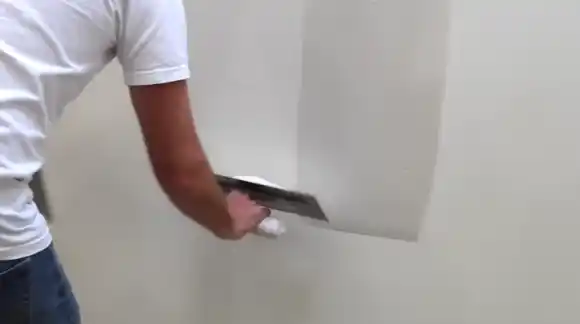
One way of reducing the danger of drywall mud compound toxicity is by ensuring that any drywall mud products used are low in VOCs (Volatile Organic Compounds). Most reputable brands will clearly label their products as having low or zero VOCs, so identifying and avoiding high-VOC products should be easy.
Another critical step in reducing the toxicity of drywall mud is wearing the proper protective gear when handling or working with any drywall mud. This includes wearing long sleeves, gloves, and a respirator mask for protection against inhalation of dust particles and other airborne contaminants.
In addition to proper protective gear and ventilation, you should always clean up after yourself when working with drywall mud. Any excess material should be wiped away with a damp cloth or vacuumed with a HEPA filter, so no residue remains on the surface.
Once finished working with drywall powder mud, ensure you wash your hands before touching anything else in the room. This helps reduce the risk of spreading hazardous particles or residue around your home or workspace.
Home Improvement Projects: Beware the Dangers of Drywall Mud!
We’ve looked at the potential health risks associated with breathing in drywall mud, particularly for children who may be more vulnerable to its toxic side effects. While using protective masks can help reduce risk when handling it, exposure should be avoided as much as possible.
It’s also essential for homeowners and DIYers alike to understand the risks associated with drywall mud so they can make informed decisions about their projects. Knowing what is in your drywall mud and how to handle it safely can help protect you and your family from any potential harm caused by this material.
Taking precautionary steps like wearing protective masks when sanding or installing drywall can reduce the risk of breathing in harmful particles. Avoiding ingesting toxic dust accidentally should be considered when working with this material.
